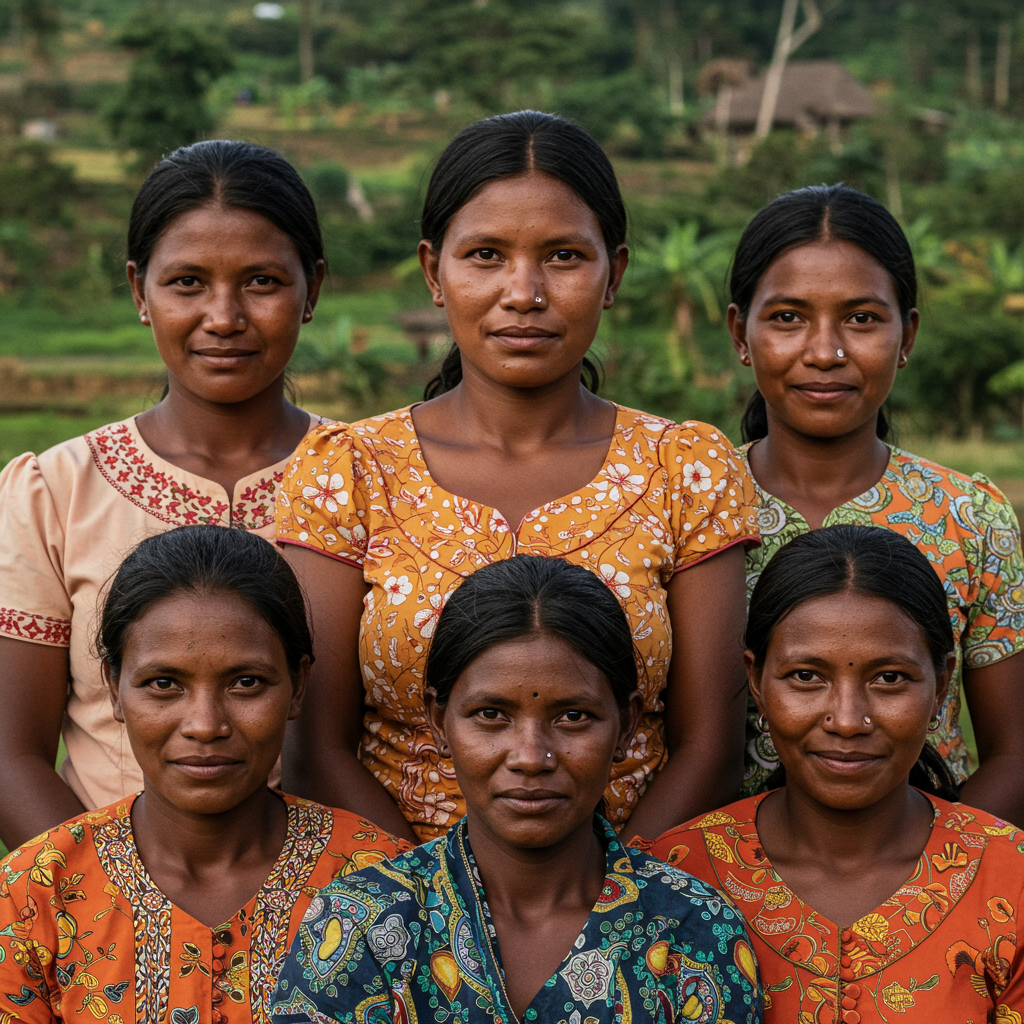A powerful photo exhibit titled “Sahy Rano,” recently showcased at the Photoville Festival in Brooklyn, New York, shines a light on a deeply neglected global health issue and the incredible courage of the women affected. The title itself, a Malagasy phrase meaning “someone who isn’t afraid to dive into the water even with a strong current,” also signifies remarkable bravery – a quality vividly embodied by the women featured.
Captured by Malagasy photographer Miora Rajaonary in Ambanja, Northern Madagascar, in September 2024, these portraits tell the stories of women navigating the harsh realities of Female Genital Schistosomiasis (FGS). The exhibition aims to raise critical awareness about this painful and often stigmatizing neglected tropical disease.
Understanding Female Genital Schistosomiasis (FGS)
FGS is a chronic waterborne parasitic infection caused by microscopic worms. It primarily affects women and girls, with an estimated 56 million suffering globally, predominantly in Africa. The disease is contracted through contact with contaminated fresh water, often encountered during essential daily activities like working in rice fields, bathing, or doing laundry – activities women frequently undertake.
Considered one of the most neglected tropical diseases by the United Nations, FGS can lead to severe health complications, including infertility, ectopic pregnancy, and painful genital ulcers.
The Heavy Burden of Stigma
One of the most devastating aspects of FGS is the social stigma it carries. Its symptoms – such as vaginal itchiness, abnormal discharge, bloody urine, and pelvic pain – can tragically resemble those of sexually transmitted infections (STIs). This similarity often leads to suspicion, shame, and dishonor for those affected.
The U.N. agency UNAIDS highlights that FGS is severely underdiagnosed, causing significant harm to women’s sexual and reproductive health. Compounding the issue, FGS is also linked to an increased risk of contracting HIV from an infected partner. While men can also contract schistosomiasis, reports from the World Health Organization indicate that the clinical signs and complications are far more prevalent and severe in women.
Sylvia’s Story: A Tale of Betrayal and Resilience
The personal narratives behind the portraits are heart-wrenching. Sylvia Razanaparana, one of the women featured, contracted FGS while working in the rice fields of Ambanja. When she began exhibiting symptoms, her husband, suspecting an STI, accused her of infidelity and left her. For four years, Sylvia endured the illness and the social fallout alone. Her path to healing only began when a medical mission visited her village, providing access to a doctor who quickly diagnosed her condition. A simple deworming medicine, praziquantel, cured her, but not before the disease had fractured her life.
Sylvia’s powerful story deeply resonated with photographer Miora Rajaonary and is a central focus of the “Sahy Rano” project.
Choosing Courage: Posing for Awareness
For these women, agreeing to be photographed and share their stories publically required immense courage. It meant confronting the very stigma that had caused them so much pain and isolation. As Rajaonary notes, the exhibit title “Sahy Rano” is particularly fitting, not only because many subjects work in the water essential for their livelihoods, but also because posing is itself an act of bravery against a strong current of social taboos.
The photographic elements employed by Rajaonary are rich in symbolism:
The Blue Backdrop: Painted blue, often dotted with white, the backdrop represents the water where the disease is contracted and the microscopic parasites that cause the infection.
Buckets and Pails: Prominently featured in many portraits, these symbolize the constant, inescapable presence of water in the women’s daily lives.
Laundry on a Line: Clothes hung as if drying after washing in contaminated water highlight the routine activities that put women at risk.
Traditional Face Masks: Several women wear decorative masks made of cosmetic paste and ground sandalwood. These traditional Malagasy masks, used for beauty and skin protection, symbolize the women’s desire to be seen as beautiful and whole, challenging the idea that they need to hide because of their illness. It’s a powerful statement of dignity and normalcy.
By stepping forward and allowing themselves to be seen, these women are not just sharing their personal struggles; they are advocating for millions of others affected by FGS, breaking the silence, and demanding attention for a disease that has been neglected for far too long.
The “Sahy Rano” exhibit, supported by the End Fund, stands as a testament to the resilience of the human spirit and the vital importance of addressing neglected tropical diseases and the devastating social stigmas they create.



